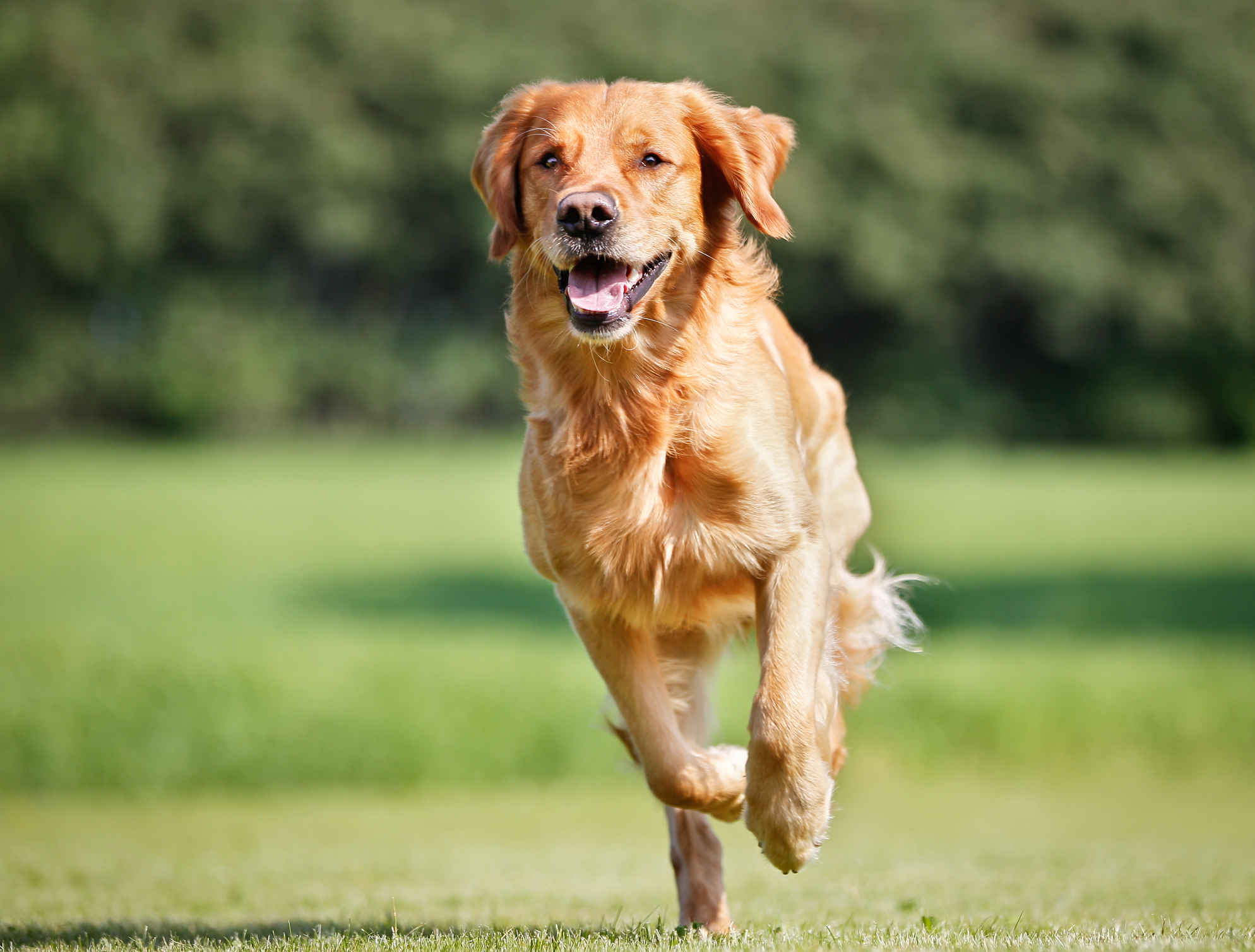
By Steven Fernandez, VMD, DACVS
Orthopedic problems in your dog can be common, with arthritis affecting an estimated 20% of dogs older than 1 year of age. Arthritis risk increases as your dog ages, and the condition can significantly impact your dog’s quality of life. Our surgery team is always available to partner with your family veterinarian to manage your pet’s orthopedic condition, although we prefer that you stave off orthopedic problems in your dog, so your pet can live an active and pain-free life. You cannot completely eliminate your pet’s disease risk, but you can take precautions, starting when your dog is a puppy, to decrease their risk for orthopedic disease. Put these four preventive measures into action to help keep your dog’s bones and joints healthy.
When shopping for puppy food, you likely become overwhelmed by the aisles of choices. Food made for your puppy’s specific breed may seem like a gimmick to catch your attention, but can actually prevent orthopedic problems in your dog. Hip dysplasia, which is one of the most common orthopedic conditions to affect dogs, is influenced by genetics and growth rate, and although you cannot change your puppy’s genetic predisposition for joint disease, you can control their growth by feeding a breed-appropriate diet. Hip dysplasia affects mainly large-breed dogs, and is more likely to develop in genetically prone puppies who take in excess nutrients, such as calcium, during the growth phase. If a puppy’s bones grow too fast for their surrounding muscles and ligaments, the joint will not be adequately supported and will wear down with repeated activity.
If your puppy is projected to weigh more than 40 pounds as an adult, feeding them a puppy food formulated specifically for large breeds is one of the best things you can do to secure their future joint health. Ask your family veterinarian to recommend a feeding plan that adequately controls your puppy’s calorie and mineral intake, and minimizes their chance of hip dysplasia development.
Veterinarians have historically recommended spaying or neutering puppies at approximately 6 months of age, but recent evidence suggests that removing important sex hormones early can set your puppy up for later orthopedic issues. Estrogen and testosterone play important roles in a puppy’s bone development by helping dictate when the bones stop growing. Spaying or neutering your puppy before their bone growth is complete eliminates these hormones, and the bones will grow longer than normal, altering their overall conformation and joint mechanics. Studies comparing orthopedic conditions, including hip dysplasia and cranial cruciate ligament disease, in intact versus spayed or neutered dogs show a lower disease rate in intact dogs.
Different dog breeds grow at varying rates, although larger breeds typically take longer to reach skeletal maturity than small breeds. Your puppy should be spayed or neutered only after their bones have fully grown to reduce future orthopedic disease risk. Your family veterinarian will recommend the best age for your puppy’s procedure based on their projected growth rate.

Obesity increases joint strain and can lead to excessive wear and tear, or exacerbate existing arthritis. Maintaining your dog at an ideal body condition throughout their life can significantly reduce arthritis risk and severity. No matter your dog’s life stage, ask your family veterinarian to assign them a body condition score (BCS), which you can compare to their ideal BCS, and determine whether a weight loss plan is in order. Regular exercise and a diet with the appropriate number of calories can help your dog return to a healthy weight that reduces joint strain. Many owners of dogs who lose weight are surprised to find their dogs more active and much happier after shedding extra pounds.
Regular exercise is critical for your dog’s physical and mental health, but the wrong exercise can lead to joint problems. In particular, growing puppies should not run on hard surfaces, as the repetitive impact can interfere with proper bone and joint development. If you have adopted an active dog breed, such as a Labrador retriever, with ambitions of a running partner, ask your family veterinarian when you can safely take them jogging. Once your dog is fully grown, which may take up to 18 months for large and giant breeds, their bones can withstand more vigorous exercise.
Safe, low-impact exercise options for your puppy include walking, romping in the grass with another puppy, and swimming. Although not all dog breeds naturally love the water, introducing your puppy early, when they are forming opinions about what is safe and fear-worthy, can help them accept the water. Swimming is a wonderful exercise option for older dogs who have arthritis, and acclimating your young puppy to water can allow them to take advantage of this therapy when they are older.
Our orthopedic surgeons treat dogs with a variety of orthopedic conditions, including hip dysplasia and cranial cruciate ligament disease. If your family veterinarian diagnoses an orthopedic condition in your dog that requires orthopedic surgery, our team would be honored to help improve their quality of life. Contact us to schedule a surgical consultation.